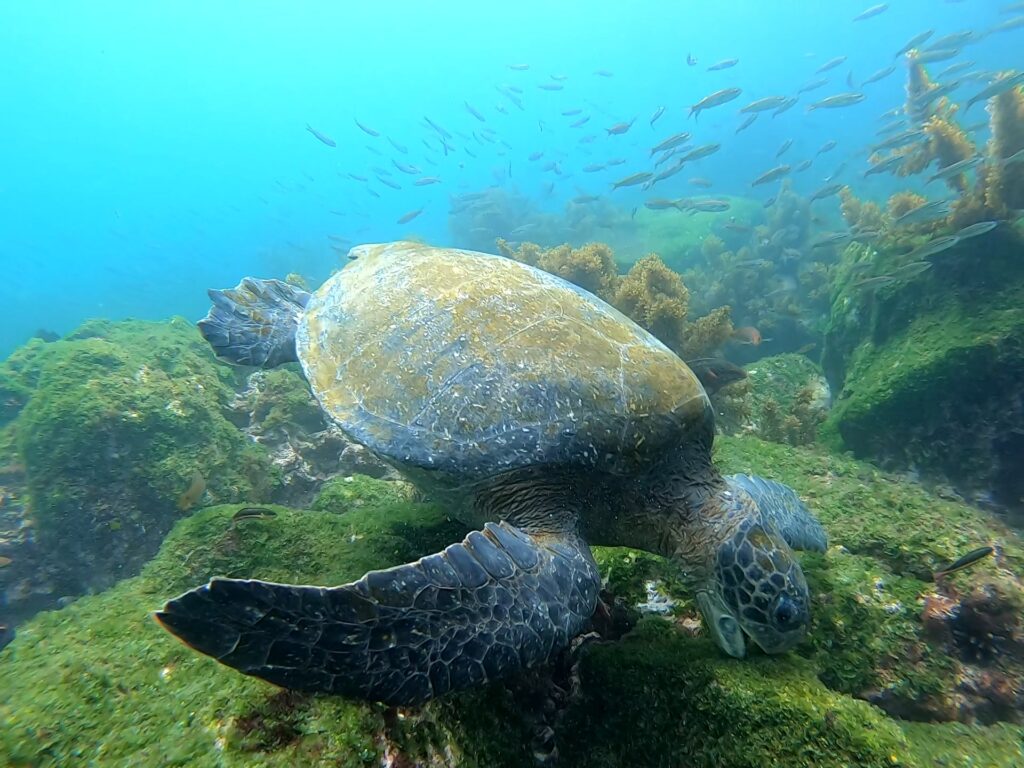
Probably the most frequently asked question when planning a Galapagos vacation is: WHEN IS THE BEST TIME TO VISIT?
The short answer is that there is no “best” or “worst” time for Galapagos travel. The islands are a fabulous year-round destination, and Galapagos weather is pleasant throughout the year. There are no extremes here, no snow or frost, no hurricanes, nor extreme hot or cold temperatures.
Of course, there are some differences in Galapagos each month: dry season vs wet season weather; changing water temperatures for snorkeling; peak vs off-season tourist months; different wildlife seasons for nesting, mating, hatching and parenting. Each of these factors can make a difference to your enjoyment of the Galapagos Islands.
Galapagos Weather: A Tale Of Two Seasons
Galapagos has two distinct climate seasons: warm & wet, and cool & dry. The difference between each season is quite subtle, but does impact life in Galapagos. Don’t worry, in both seasons you’ll still get to see the wonderful wildlife and stunning volcanic panoramas. But it does pay to understand the differences when you plan your trip.
Here is a summary of what to expect in each Galapagos climate season:
The warm & wet season runs roughly from December/January through May. Galapagos weather during these months is sunny and warm, but occasionally wet. So visitors can expect plenty of sun, warm temperatures on land and at sea, and occasional rain showers or downpours. You’ll probably go home with a healthy tan, but sun protection is a must to prevent sunburn. Rain gear is a good idea for island excursions, especially in the highlands.
The rains are welcome in the Galapagos highlands, causing a dramatic transformation of this important habitat. Wet weather produces lush green vegetation, perfect conditions for land species such as the giant tortoise, Galapagos finches, and other land birds who find food sources plentiful. Galapagos marine species are also easily spotted during the warm and wet season, even though the warmer seas are not their ideal conditions for feeding or breeding.
The cool & dry season runs approximately from June to December. These months bring cloudier skies, cooler temperatures on land and at sea, and a drier climate. Many visitors find this season more pleasant for excursions. Sun protection is still important – even on cloudy days it is easy to burn so close to the equator. A wetsuit is recommended for snorkeling as the sea temperatures drop. You’ll also appreciate having a lightweight jacket in the evening, especially if it’s windy.
Now it is the time for the Galapagos marine species to shine. The cold Humboldt current brings rich nutrients from the Antarctic to Galapagos waters. These are optimal conditions for Galapagos sea lions, marine iguanas, sharks and seabirds like the blue-footed booby and waved albatross. Migratory whale species are also attracted to the Galapagos islands to feed.
In contrast to the wet season splendor, the dry weather leaves the coast and much of the highlands almost bare. You’ll still see plenty of Galapagos land wildlife, but the plants and flora are waiting for the rains to return.
Remember, both Galapagos climate seasons are great times to visit the islands. There is no best or worst season, it all comes down to personal preference. However, if you’re also coming to surf, the best waves from the north are from December into March, while you be surfing swells from the south the rest of the year. Whichever month you choose to travel you’ll have an unforgettable trip!
Happy Gringo has helpful posts, linked from this page, outlining the Galapagos weather (including air and water temperatures) and wildlife activity by month.
Is there a high and low tourist season in Galapagos?
Yes, and this should certainly be a consideration when planning your trip. The Galapagos high season generally follows the school vacation schedule. So July and August are busy, as are Easter week, and over Christmas / New Year. Local Ecuadorian public holidays such as Carnaval (February or March) and All Saints & Souls (November) are also popular times when Galapagos flights often sell out. During these times, we strongly recommend booking everything in advance to avoid missing out on popular tours. Also, due to the higher demand, you should expect to pay more for flights, cruises, and accommodations.
Read our Top Ten Travel Tips for helpful info on planning your trip to Galapagos!


